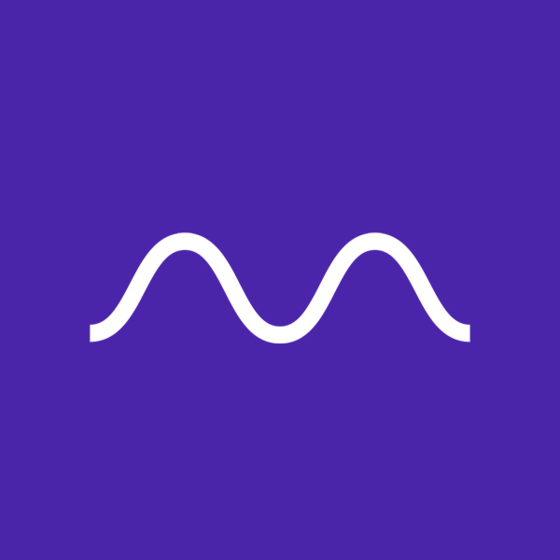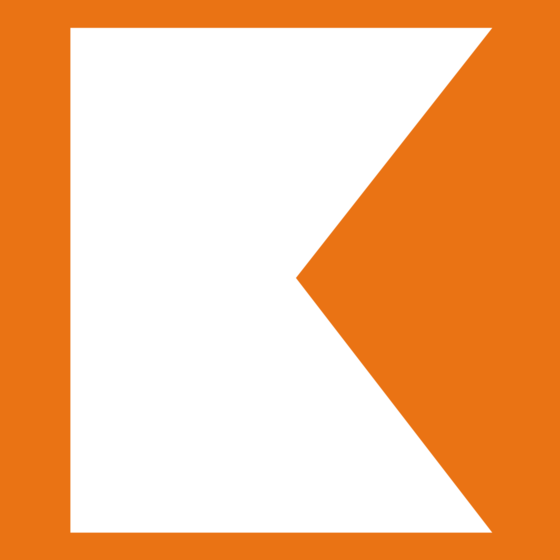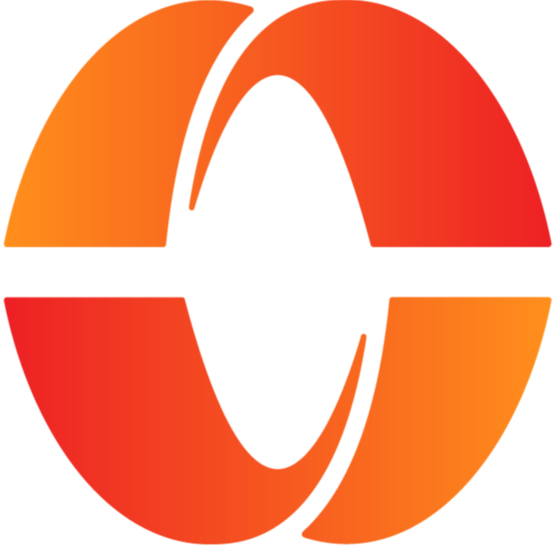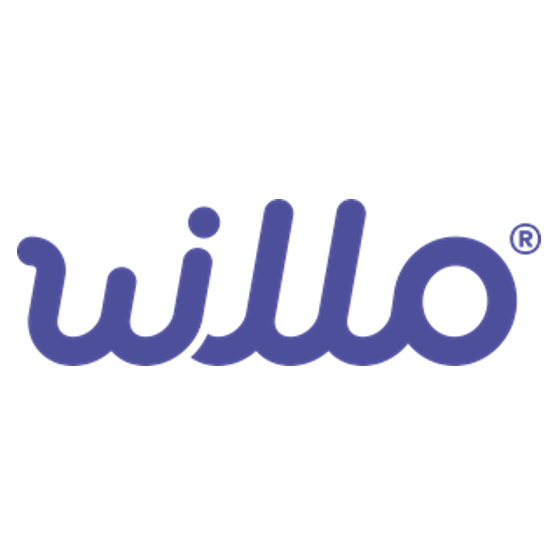10 Best Resource Management Software
Here's my pick of the 10 best software from the 20 tools reviewed.
Human resources are at the core of resource management software. Project managers use it to keep tabs on what the team is doing and if they are free to take on more tasks. This is especially useful, considering most project managers are running 2-5 projects at the same time!
However, if you are currently on the fence about whether you should invest or not in software like this, let me give you a quick thought. Resource management software can help you create a culture of retention. How? It gives you information on the workload of your team. Having a view that shows you allocation percentages can help you control workloads and make sure your resources are not on the brink of burnout.
So keep your team at healthy (not 100%) levels of allocation, give them time to develop their skills, and enjoy a more committed and efficient team.
How We Picked The Best Resource Management Software
I evaluated and compared the most popular resource management tools on the market, both for their reviews and user interface. Then I weighed factors that make workforce management software a good option for resource management specifically, such as the ones that follow.
- User Interface (UI): The amount of information related to resources can be overwhelming, especially as our projects grow. Therefore, the software we use must make good use of white spaces and have easy-to-navigate toolbars and menus so we can find our way through the tool.
- Range of features: I looked at all the different angles from which you can see your resources. Whether that is from a timesheet, workload view, capacity hours, time reports, or project views by resource.
- Integrations: Some software on this list might not have the level of depth required to be excellent resource management software, but they use integrations to compensate for that. Integrations extend the functionality of a platform by connecting it to external tools.
- Pricing: I searched through pricing information to find if there are free versions of the software, free trials, and the starting price of paid plans. There should be a balance between price and value.
The Best Resource Management Software Comparison Chart
It’s easy to be overwhelmed by the baffling array of resource planning software out there. Below, we’ve put together a reader-friendly table neatly summarizing basic info about the tools described in this article.
| Tool | Best For | Trial Info | Price | ||
|---|---|---|---|---|---|
| 1 | Best for visual, profitable resourcing | 30-day free trial available | From $7/scheduled user/month | Website | |
| 2 | Best for midsize and large companies | 14-day free trial + free demo available | From $7/user/month (billed annually) | Website | |
| 3 | Best for simple workload planning | 14-day free trial + free plan available | From $8/user/month (billed annually) | Website | |
| 4 | Best for strategic resource allocation | Free trial available | Pricing available upon request | Website | |
| 5 | Best for people-centric resourcing | Free demo available | Pricing upon request | Website | |
| 6 | Best for resource visibility with heatmaps | 30-day free trial | From $4.16/user/month (billed annually) | Website | |
| 7 | Best resource management software with combined PSA and PPM functionality | 14-day free trial | From $6-29/month | Website | |
| 8 | Best for workload optimization | 7-day free trial | From $9/user/month (billed annually) | Website | |
| 9 | Best for resource planning, capacity management & optimization | 60-day free trial | Pricing upon request | Website | |
| 10 | Best for Microsoft users | 30-day free trial | From $10/user/month (billed annually) | Website |
-

Rippling
Visit WebsiteThis is an aggregated rating for this tool including ratings from Crozdesk users and ratings from other sites.4.8 -

Paylocity
Visit WebsiteThis is an aggregated rating for this tool including ratings from Crozdesk users and ratings from other sites.4.5 -

Willo
Visit WebsiteThis is an aggregated rating for this tool including ratings from Crozdesk users and ratings from other sites.4.8
Reviews Of The Best Resource Management Software
Have a look and sign up for some trials to test-drive and find the best resource management software for your case.
Float is a resource management software that helps professional services teams allocate, scope, and report on client work to improve their profitability. You get the context and data you need to match the right people to the right projects when resourcing client work.
I recently spoke with Chris Watson, a long-time project manager who recently switched his team from Smartsheet to Float. "Most of our projects run for 1-6 months, so Float's flexibility in adjusting schedules is a big advantage," he says. He's also made use of Float's milestone capabilities. "Float's milestone feature has been a big improvement for us—it lets us plan team efforts around key deadlines," he says.
Why I picked Float: Float offers a visual setup to help you make smarter resourcing decisions by tracking profitability implications of your resourcing as you go. This means utilization, cost, and billable rates are all captured and tracked at the project or person level, making it easy to report on them live.
Scheduling resources in Float is also easy with color-coded drag-and-drop allocations, keyboard shortcuts, and the option to switch between hours or percentages. Plus, it lays in elements of capacity management, so you get instant feedback when resourcing. It shows you everything from open time slots to conflicts like over-allocations, tentative work, planned time off, or regional holidays. Overall, Float is perfect for professional services teams who don’t need the complexity and extra overhead of traditional PSA software.
Float Standout Features and Integrations
Features include a centralized resource schedule, capacity management, project scoping, actuals tracking, advanced reporting, cost and profitability tracking, rates, and placeholders (for contractors or new hires). While the Schedule is the center of the platform, the project plan is a great place to align client work expectations with current availability and budgets. When combined with the Rates features, Float’s Reporting allows you to forecast utilization, track the cost of your people, and anticipate project margins in real-time. And with time tracking that auto-fills based on scheduled work, capturing actuals is simple.
Integrations include Google Calendar, Outlook Calendar, Slack, Jira, Asana, Teamwork, and Trello. Float also has a Zapier app, which allows you to connect to a library of 1,000+ apps like your favorite project management systems or your CRM.
Pros and cons
Pros:
- 24-hour support
- Strong resourcing context and data
- Mobile app for iOS and Android
Cons:
- Time tracking requires you to get a higher plan
- Updating staff/personnel list takes time
New Product Updates from Float
Enhance Your Workflow with Float's Project Stages
Float has introduced custom project stages, letting teams tailor workflow labels to match their unique processes—from proposals through to payment—while controlling how projects show up on schedules and trigger notifications. These stages enhance visibility, filtering, and reporting, making project tracking more flexible and predictable. For more information, visit Float's official site.
Hub Planner is a versatile solution designed for managing resources and projects at scale. It caters to companies with complex resource needs by helping teams allocate workloads and track time effectively. This software is particularly well-suited for organizations handling multiple projects and requiring detailed oversight.
Why I picked Hub Planner: Hub Planner offers advanced scheduling tools that allow you to assign tasks and visualize resource allocation effortlessly. Its timesheets feature integrates seamlessly with scheduling, helping your team track hours and analyze productivity. Additionally, the built-in reporting functionality provides actionable insights for improving project performance. These features are ideal for midsize and large companies managing diverse resources and complex projects.
Hub Planner Standout Features & Integrations
Features include a vacation and leave management functionality that enables teams to plan around availability gaps without disrupting project timelines. The platform's resource utilization heatmaps also provide a quick visual overview of under- or over-utilized resources to ensure optimal workload distribution.
Integrations include Microsoft Outlook, Google Calendar, Slack, Zapier, Jira, Trello, Asana, Salesforce, Harvest, and Basecamp.
Pros and cons
Pros:
- Search filter for available resources with skill sets & location
- Powerful & precise built-in reporting
- Easy toggle between user/group
Cons:
- Editing custom fields requires manual input or help from Hub Planner support
- Need to click into modal for more details on events/projects bookings
monday.com is a flexible work platform that helps teams communicate in context and get a big picture of outstanding projects, available resources, and projected timelines.
The tool also gives you tons of control over your projects via customization. I recently spoke with Ken Sarmadi, a consultant for both monday.com and Asana. "If you're a control freak and want to manage everything down to the finest detail, monday.com is your tool," he says.
Why I picked monday.com: I chose monday.com primarily for its smart design and straightforward interface. In my opinion, even team members who are lacking resource management experience can quickly get started planning timelines, assigning project ownership, and managing projects. The monday.com app also gives you the flexibility and power to run your team on the go, which I think is a great feature for busy managers. You can organize your daily work, projects, and teams as well as establish workflow automations, share documents, and create Gantt charts for further clarity.
monday.com Standout Features & Integrations
Features include a dependency tracking feature that ensures task assignments and timelines are automatically adjusted when project dependencies shift. Additionally, monday.com’s time estimation column allows teams to compare planned vs. actual time spent on tasks, which can help improve forecasting accuracy and enable data-driven resource planning.
Integrations include apps like Slack, Google Calendar, Jira, GitHub, Excel, Google Drive, Gmail, Trello, Dropbox, Typeform, and thousands more accessible via Zapier.
Pros and cons
Pros:
- New features being rolled out regularly
- Easily create boards dedicated to operational resource tracking
- Color coded status great for resource overviews
Cons:
- May be too robust for small teams
- Gantt charts locked to mid-level plan
New Product Updates from monday.com
New AI Integration Enhancements on monday.com
Easily integrate AI agents and apps to enhance task management and insight generation. For more information, visit monday.com's official site.
Adobe Workfront is a cloud-based work management platform that enhances project management and resource management across teams. It's designed to centralize workflows, making it easier for teams to collaborate and manage their tasks.
Mircea Dima, who manages engineering teams as the Founder, CEO, and CTO of AlgoCademy, uses Adobe Workfront regularly. "I liked the option to centralize documents, and approvals," he says. "To a small and growing engineering team such as ours, it has made it easier to work together and avoid bottlenecks, particularly when we are taking several courses, coding tutorials, and updating our platforms in parallel," he continues.
Why I picked Adobe Workfront: The platform offers a resource planner that supports the initial stage of resource management by budgeting project time for your resources according to scheduled availability. You can organize users into resource pools and assign multiple pools to a project in the planning stage. This feature allows for strategic allocation and utilization of your organization's resources, ensuring that the right people are assigned to the right work at the right time. Additionally, Workfront's workload balancer enables you to schedule or assign resources to tasks based on the number of hours needed to complete tasks and resource availability.
Adobe Workfront Standout Features & Integrations
Features include a scenario planner that serves as a high-level planning tool to help you manage resources across multiple initiatives, which can span several years and encompass multiple projects. Workfront also provides a utilization report that allows you to analyze budgeted, planned, and actual resource allocations across projects, helping you understand their impact on the project's cost and revenue.
Integrations include Frame.io, Creative Cloud, Box, Dropbox, Google Workspace, Jira, Microsoft Calendars (Office 365/Outlook Live), Microsoft OneDrive, Microsoft Outlook, Microsoft Teams, and Salesforce.
Pros and cons
Pros:
- Utilization reports help analyze resource allocations
- High-level scenario planning across multiple initiatives
- Workload balancer helps in assigning tasks based on resource availability
Cons:
- Could offer more advanced features, like intelligent resource forecasting
- Integration setup can be time-consuming
New Product Updates from Adobe Workfront
Adobe Workfront's Transition to Unified Approvals
Adobe Workfront is transitioning from Legacy document approvals to Unified Approvals through a six-month phased rollout, starting automatically on July 17, 2025. More details at Adobe Experience League.
Kantata is a resource management platform built for professional services teams and agencies. Unlike generic tools, it unifies resourcing, financials, and project delivery while keeping people at the center of staffing decisions.
I recently spoke with Daniel Vasilevski, the director & owner of Pro Electrical, about how he uses Kantata with his team. He uses this tool because of the "resource planning dashboard that displays the availability of all team members for different jobs in one interface," he says. "During a large job...a sudden storm triggered 8 urgent callouts across different suburbs," he says. "Using the resource planning dashboard...I could see where each of my 14 electricians was and reassign 4 of them...without derailing the project," he explains. This had major benefits: "This...reduced client wait times from...more than a day down to under four hours. It also saved nearly $3,500 in overtime since the workload was evenly distributed," he says.
Why I picked Kantata: What appeals to me about Kantata is how its resource management module helps leaders make staffing decisions that prioritize people as much as project needs. The platform provides real-time visibility into capacity and utilization, so you can balance workloads and ensure the right team members are assigned to the right tasks. Its skills-based resource planning also makes it easier to identify gaps, align talent with demand, and create opportunities for employee growth. This people-centric approach not only optimizes efficiency but also supports long-term team engagement.
Kantata Standout Features & Integrations
Features include automated resource allocation based on skill sets, scenario planning to test different staffing models before committing, and customizable dashboards that track KPIs across utilization, delivery, and profitability. Kantata also offers portfolio-level visibility so leaders can manage multiple projects and client accounts without losing sight of team health or resource availability.
Integrations include Salesforce, SAP, Jira, Xero, BambooHR, Slack, Worday, QuickBooks, HubSpot, and NetSuite.
Pros and cons
Pros:
- Resourcing fully integrated with master planning
- Good reporting functionality for resource data
- Distinguish between soft and firm allocation
- Easy capacity management
Cons:
- Advanced features are available only in the Premier and Enterprise editions of the application
- Proofing solution is an add-on
- Custom reports can be difficult to create without training
New Product Updates from Kantata
Kantata Introduces Real-Time Sentiment Analytics
Kantata has unveiled In-App Sentiment Data in its Pulse solution, enhancing real-time sentiment analytics to improve team morale and project delivery. For more details, visit Kantata Press.
Resource Guru is a resource management software designed to help teams schedule, plan, and track time across projects and resources. It caters to industries like agencies, construction, engineering, and IT, offering a centralized platform for coordinating people, equipment, and meeting spaces.
I recently spoke with Trond Nyland, the CEO and owner of Todus.no AS, about his use of Resource Guru "to assign tasks to several e-commerce and real estate projects." To him, "what stood out was how easy it was to see who was available at a glance." This had a few benefits for his team. "It helped us meet deadlines without putting too much stress on the team," he says.
Why I Picked Resource Guru: I chose Resource Guru for its mix of flexibility and accuracy in scheduling. The platform handles people, equipment, and meeting rooms in a single view, making it easier to plan across different resource types without juggling multiple tools. Advanced custom fields and filters mean you can tailor the setup to reflect skills, locations, or other attributes, while approval workflows and clash management features reduce the risk of double-booking or overlooked requests.
What really sets Resource Guru apart for me is its focus on visibility. The heatmap views give you an instant read on availability, so you can see at a glance where capacity is tight or underused. Personalized dashboards and daily summary emails keep the right information in front of each team member, helping managers make quick, confident resourcing decisions without drowning in data.
Resource Guru Standout Features & Integrations
Features include clash management and waiting lists to prevent double-booking, advanced custom fields and filters for tailored scheduling, approval workflows for better accuracy, and heatmap views plus personalized dashboards to make team availability visible at a glance.
Integrations include Google Sheets, Jira Software, Smartsheet, Asana, monday.com, Basecamp, Microsoft Outlook, Clockify, Google Calendar, Slack, Microsoft Teams, and Teamwork.
Pros and cons
Pros:
- Heatmaps for quick capacity insights
- Daily resource summary emails
- Attractive and flexible UI
Cons:
- Limited reporting depth compared to larger enterprise tools
- Unable to sort resources by experience level
Best resource management software with combined PSA and PPM functionality
Polaris PSA is a cutting-edge professional services automation (PSA) software that revolutionizes project management for service-based businesses. With AI-driven resource allocation, real-time project monitoring, and predictive analytics, Polaris PSA optimizes project efficiency, enhances resource utilization, and enables data-driven decision-making, ultimately leading to improved project success and profitability.
Why I Picked Polaris PSA: Polaris PSA excels in project portfolio management by offering a holistic view of an organization's projects, resources, and financials. The platform's AI-driven resource allocation and scheduling capabilities ensure that resources are optimally utilized across multiple projects, preventing over-allocation and enabling efficient workload distribution. With real-time project monitoring and predictive analytics, stakeholders can gain valuable insights into project health, identify potential risks, and make data-driven decisions to prioritize and allocate resources effectively.
Polaris PSA Standout Features & Integrations
Features include continuous capacity vs. demand analysis, which provides real-time insights into resource gaps to help managers proactively address shortages or optimize underutilized capacity. The platform also features configurable dashboards tailored to various roles, giving executives, project managers, and team members personalized views of resource metrics, project health, and financial performance.
Integrations include SAP, ADP, Salesforce, Quickbooks, Atlassian, Microsoft Dynamics, Sage, Servicenow, Zero, Zoom, Outlook Calendar, Microsoft Teams, Microsoft Azure DevOps, Google Meet, Google Calendar, and other popular business software.
Pros and cons
Pros:
- Easy to learn and use
- Detailed local and global resource management + compliance
- All-in-one PSA and PPM solution
Cons:
- Limited number of custom fields at the project level
- Subscribe to 3 plans to get all their offerings
Bonsai is a comprehensive business management platform that offers all-in-one solutions for managing various aspects of a business. It consolidates projects, clients, and teams into one easy-to-use platform, and is ideal for businesses, like agencies, consultancies, and professional services firms, looking for integrated resource and business management.
Why I picked Bonsai: What I like about Bonsai is their all-in-one approach to managing a business. On the resource management side, the platform offers workload charts and planning functionalities. You can set daily limits for team members, schedule multiple projects, and log time off. Its dashboard gives you a comprehensive overview of current resource allocations, so you can see who is over and under-utilized. Bonsai's analytics also allow you to forecast future project needs, whether it's budget or human resources.
Bonsai Standout Features & Integrations
Features include an automated project prioritization feature that dynamically adjusts task order and resource allocation based on deadlines and project importance to ensure critical work is always on track. Its time-off impact analysis tool also allows managers to visualize how planned absences will affect team capacity and project timelines, which makes proactive adjustments easier.
Integrations include Zapier, Slack, QuickBooks Online, Gmail, Google Calendar, Calendly, ClickUp, Trello, Google Drive, Google Sheets, Xero, HubSpot, and more.
Pros and cons
Pros:
- Robust reporting and analytics
- Real-time capacity planning
- All-in-one business and resource management
Cons:
- May not be suitable for scaling businesses
- Lacks more advanced features
Saviom is a configurable and scalable resource management software built to combat the resourcing challenges across all industries. It can align resource capacity to changing demands for current and future projects in the pipeline.
Why I picked Saviom: I chose Saviom for its suite of advanced features, such as multidimensional scheduling, capacity planning, real-time optimization, talent planning, time management, and business intelligence reports. Its configurable software architecture can be customized and scaled up to meet the specific business requirements. Role-specific dashboards also enable various stakeholders to fast-track decision-making across matrix boundaries.
Saviom Standout Features & Integrations
Features include an all-in-one resource planner, which offers a host of advanced functionalities such as multi-dimensional analysis, heat mapping, intelligent matchmaking, early warning, and KPI forecaster. All these features collectively help boost billable utilization of every resource, bridge skills gaps proactively, reduce burnout, and minimize hiring/firing costs. The tool also provides scenario-based modeling and simulation that helps create the best resource plan with the existing constraints.
Integrations are available with popular business applications, although specific ones aren't mentioned.
Pros and cons
Pros:
- Highly configurable & customizable resource management tool
- Multidimensional forecasting and capacity planning
- Highly flexible real-time reports, analytics & dashboards
Cons:
- More suitable for medium to large enterprises
- There is a learning curve as the tool comes with extensive features
Microsoft Project is a planning and management solution that supports scheduling, task coordination, and resource allocation workflows. You can use it to build project timelines, assign work, and track progress across tasks and milestones. It connects resource, cost, and task data to give you visibility into workload and project health.
Why I picked Microsoft Project: This tool aligns closely with other Microsoft 365 services such as Excel, Teams, and Outlook, so the interfaces and data flow feel familiar. The scheduling engine handles dependencies, critical paths, and resource leveling so your plans can adapt to change. You’ll see resource capacity, task assignments, and cost impact in the same environment. The reporting and dashboard features help you monitor performance and resource use in context.
Microsoft Project Standout Features & Integrations
Features include baseline and variance tracking to compare planned versus actual progress, built-in timesheet capture for effort logging, and portfolio views to see multiple projects in aggregate. You also get conditional formatting and customizable fields to tailor project views to your needs.
Integrations include Excel, Power BI, Teams, SharePoint, Outlook, Office Apps, Power Platform, and Azure.
Pros and cons
Pros:
- Driver prioritization module for ranking strategies/objectives
- Helpful project template descriptions for guidance
- Can generate a Gantt chart from a spreadsheet
Cons:
- Few customization options
- Limitations on collaboration tools
Other Resource Management Solutions
None of the above work for you? Check out the below list of additional tools:
- Anaplan
For scenario planning
- ProjectManager
For resource monitoring through project dashboards
- Meisterplan
For role-based resource allocation
- ActiveCollab
For built-in invoicing
- Planview AdaptiveWork
Enterprise-grade resource management tool
- Schedule It
For scheduling work shifts
- Planview Vantage
For the PMO level
- PSOhub
RM that integrates with CRMs
- Parallax
For predictive resource management
- elapseit
For its features that support kickstart to invoice
Check out our video on resource management software here:
Resource Management Software FAQs
Find answers to common questions about resource management and resource management software.
What is resource management?
How do you create a resource plan?
What is a resource forecast?
How do you calculate project resources?
Do I need resource management software?
Should I still be using spreadsheets?
What is resource management software?
What are the benefits of using resource management software?
What features should I look for when evaluating resource management software?
What's an example of an effective resource management system?
Other resource management lists
- Enterprise resource planning software for resource management at large companies.
- Resource planning software to help you forecast required resources and their utilization on your projects.
- Resource scheduling software to help you schedule equipment, rooms, staff, and other resources.
- Resource allocation software, which is specifically designed to help you alllocated the right resources to the right projects and tasks.
- Free resource management software, in case you need a less expensive option that will still cover your primary needs.
- Marketing resource management software (MRM software) which is designed specifically for marketing teams.
- Resource tracking software, which combines resource planning with tracking to help you monitor and adapt your plan as you go.
- Open source resource management software for extra flexibility and (often) cheaper pricing.
- Web-based resource scheduling software, in case you require a SaaS solution, rather than an on-premise option.
What's Next?
Now that you know some of the best resource management tools, you might want to read our complete guide to workload capacity to get the most out of your team, boost morale, and improve output.


























